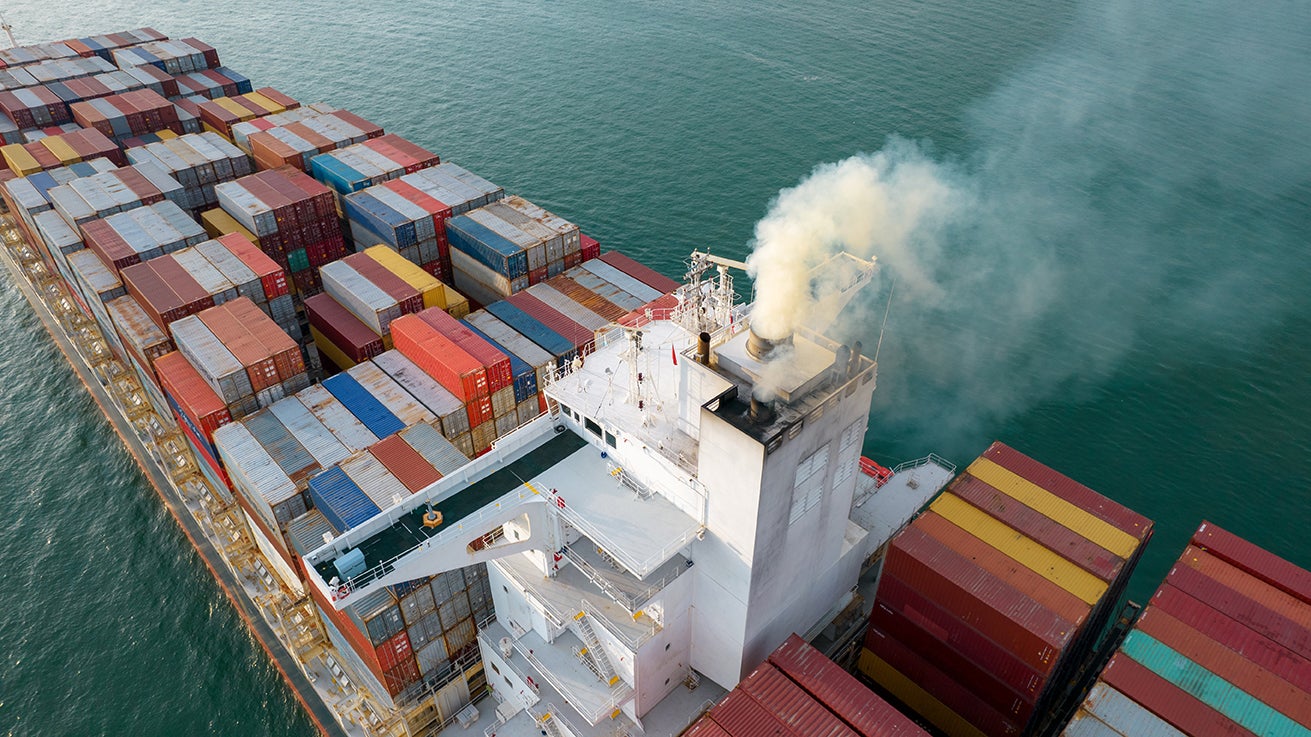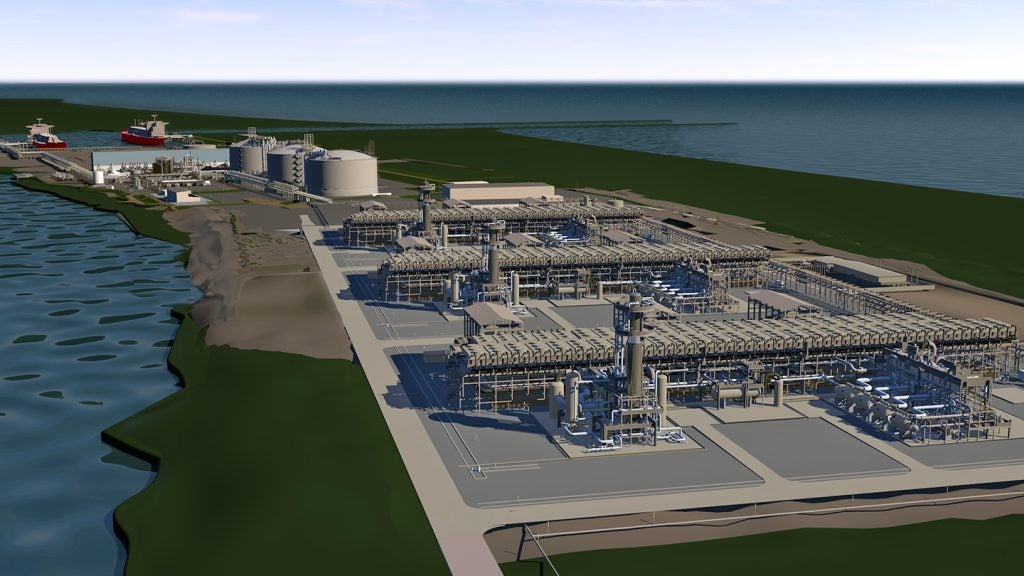
Transport by air and sea depends on engines that usually run on fossil fuels, increasing CO₂ emissions. Even though road transport emissions remain more significant, shipping and aviation account for 12% and 11%, respectively, according to an analysis by GlobalData, Offshore Technology Focus’s parent company.
The International Energy Agency’s (IEA’s) aviation tracking data found that around half of the year-on-year oil emissions increase came from the aviation industry. The industry also accounted for 2% of global energy-related CO₂ emissions in 2022. This follows significantly lower demands in 2020 due to the Covid-19 pandemic. Post-pandemic CO₂ emissions have now reached 800 million tonnes (Mt), almost 80% of pre-pandemic levels. Direct CO₂ emissions from fossil fuel combustion plummeted to less than 600 Mt of CO₂ emissions in 2020, whereas emissions in 2019 reached 1000 Mt.
According to the IEA, international shipping also accounted for 2% of global energy-related CO₂ emissions in 2022, growing by 5% after a continued rebound from a decline in 2020. Right now, emissions are back to 2017-2018 levels.
As Europeans looked for ways to cut gas consumption following the Russian full-scale invasion of Ukraine, a rise in coal use increased emissions and more than offset the 1.6% decline in natural gas emissions. Emissions from oil grew by 2.5%, while still not yet reaching the pre-pandemic levels.
Demand growth for renewables in transport, especially electric vehicles, continues to grow, but still, the aviation and maritime sectors have yet to see real progress in decarbonising. Francesca Gregory, GlobalData’s energy transition analyst, said: “Despite lofty emission reduction targets, both the aviation and maritime sectors are firmly off track of their pathways for decarbonisation, according to the IEA.
See Also:
“High energy density requirements for long-distance travel are the key barrier to the replacement of conventional fuels, granting these two heavy transport sectors a reputation for being among the most difficult to decarbonise.”
How well do you really know your competitors?
Access the most comprehensive Company Profiles on the market, powered by GlobalData. Save hours of research. Gain competitive edge.

Thank you!
Your download email will arrive shortly
Not ready to buy yet? Download a free sample
We are confident about the unique quality of our Company Profiles. However, we want you to make the most beneficial decision for your business, so we offer a free sample that you can download by submitting the below form
By GlobalDataFirst steps towards decarbonising aviation
“Within shipping, progress has been somewhat slow. Although Yara’s electric and autonomous container ship is often used as a poster child for the maritime industry’s decarbonization, the wider sector has been slower to wean itself off fossil fuels.
“While no individual technology can provide a silver bullet solution to each sector’s decarbonization challenge, a few are showing signs of promise. For example, Seabound’s CCUS retrofit solution plans to go commercial in 2024, and can be fitted to ship exhausts, capturing up to 95% of carbon emissions. Meanwhile, Maersk has 25 green methanol-powered ships on order that will enter circulation from 2026 onwards,” Gregory adds.
“The impacts of the energy crisis didn’t result in the major increase in global emissions that was initially feared, and this is thanks to the outstanding growth of renewables, EVs, heat pumps and energy-efficient technologies. Without clean energy, the growth in CO₂ emissions would have been nearly three times as high,” said IEA executive director Fatih Birol.
According to a report by GlobalData, technologies like electrification, alternative fuels such as sustainable aviation fuels, hydrogen fuel cells and carbon capture, utilisation and storage (CCUS) show potential for decarbonising, but there are limited opportunities to adopt alternative fuels across aviation and maritime. Unlike road vehicles, electrification also has a limited capacity to decarbonise aviation and shipping.
“Carbon-based e-fuels or synthetic fuels use renewable energy to produce hydrogen from water and add carbon dioxide. Biofuels are made by processing biomass (organic material), which is renewable and can be used to make sustainable aviation fuels (SAFs) and biodiesel,” the report reads.
Growth of sustainable aviation fuel
In recent years, sustainable aviation fuels (SAFs) have been one of the most used ways to decarbonise aviation. Jet kerosene dominates the demand for aviation fuel, while SAFs account for less than 0.1% of all aviation fuels consumed. The fuels can be deployed in current infrastructure with minor changes to fuel delivery equipment, and manufacturers and operators have increasingly tested SAF-based flights.
In June, TotalEnergies announced a new target to produce 1.5 million tonnes of SAFs by 2030, amounting to 10% of the world’s SAF market by then, GlobalData reported. The company expects to produce 500,000 million tonnes of SAF per year by 2028 across all its production units, including new units based in Europe, the US, Japan and South Korea.
India’s Union Minister for Petroleum and Natural Gas, Hardeep Singh Puri, said the country plans to mandate a 1% use of SAFs for domestic airlines by 2025.
Although the country has no policies governing SAFs, unlike some European countries and the US, the Indian government said this marked a significant development towards decarbonising the aviation sector.
“More ambitiously, if we [set a] target for a 5% SAF blend, India [will] require around 700 million litres of SAF [per year],” Puri said.
The thirst for sustainable aviation fuels
The government said India’s civil aviation sector consumed around eight million tonnes of aviation turbine fuel while emitting 20 million tonnes of greenhouse gases in 2019. “India has feedstock for potential production of 19–24 million tonnes of SAF per year, whereas the estimated maximum requirement of SAF in India, considering 50% blend, is around 8 million to 10 million tons per year by 2030,” Puri said.
The International Civil Aviation Organisation has set up a “carbon neutral growth from 2020” scheme. However, according to the independent organisation Climate Action Tracker, the scheme covers less than half of international aviation emissions between now and 2035, and would be unlikely to cause any “real emission reduction”.
In 2022, Japan proposed legislation mandating that 10% of aviation fuel must come from SAF by 2030. Around the same time, the Civil Aviation Administration of China introduced its green development plan, providing a guide to green, low-carbon and sustainable development of the civil aviation industry in China.
The IMO’s goals for the shipping industry
In July, the International Maritime Organisation (IMO) set new goals for the shipping industry, targeting net-zero “by or around 2050”. The revised IMO Greenhouse Gas Strategy has included an uptake of alternative zero- and near-zero emissions fuels by 2030.
“The adoption of the 2023 IMO Greenhouse Gas Strategy is a monumental development and opens [up] a new chapter towards maritime decarbonisation. At the same time, it is not the end goal. It is in many ways a starting point for the work that needs to intensify even more over the years and decades ahead of us,” IMO secretary general Kitack Lim said.
According to the IEA, orders for new ships have shown a trend towards alternative fuels. However, new fuelling infrastructure, known as bunkering in the shipping industry, must use zero-emission fuels. The IMO has also set emissions checkpoints for 2030 and 2040 to roll out more low-carbon technologies. However, environmentalists have pointed out the vagueness of the 2050 net zero targets and conservative emissions targets for 2030.
The IMO targets are not legally binding, and countries like Brazil, India and China have criticised them as “unrealistic”. They also fear that decarbonising shipping could bring an unnecessary economic burden, UK-based decarbonisation news website Carbon Brief reported.
Chinese shipping news agency Eworldship reports that the country proposed an “International Maritime Sustainable Fuels and Fund” instead of a carbon levy. This would set emissions limits with traded carbon credits for going under or over the limit.
Tracking and reducing emissions
The shipping industry can reduce its emissions by 47% by 2030 at an additional cost of 6-14% on average. While the aviation industry is progressing in the private and government sectors, the shipping industry has yet to see more concrete policies. Additionally, the pressure continues to increase on the international shipping industry to accept carbon levies on ships that would fund climate action.
The private sector is taking its own actions to track and reduce generated emissions. Gregory says: “Amazon has been making its own shipping containers and chartering private cargo ships since 2018. The company has wrapped up the shipment element of its business into its goal to reach net zero emissions by 2040 through electrification and alternative fuels.
“Alternatively, other key players in the shipping industry are circumventing the challenge of abating emissions at the ship exhaust in favour of offsetting techniques. For example, FedEx has pledged $100 million to establish the Yale Centre for Natural Carbon Capture.”
The IEA take a broader view. Often a strong advocate of decarbonisation, the IEA’s Birol said: “We still see emissions growing from fossil fuels, hindering efforts to meet the world’s climate targets. International and national fossil fuel companies are making record revenues and need to take their share of responsibility, in line with their public pledges to meet climate goals. They must review their strategies to ensure they’re aligned with meaningful emissions reductions.”







